#hikaru magic knight rayearth ova
Explore tagged Tumblr posts
Text

it's her! ... ... ... ...Hikaru!
#my art#digital art#phone art#click on image/picture for better quality#fan art#fanart#hikaru magic knight rayearth ova#magic knight rayearth ova#hikaru shidou#lexus (rayearth)#this ova is suxh a trainwreck lmaooo#i saw this scene and started laughing hysterically#colored doodles#april 3rd 2023#4/3/2023#this drawing took 20 minutes
7 notes
·
View notes
Text

Rayearth
#leo arts#magic knight rayearth#mahou kishi rayearth#hikaru shidou#umi ryuuzaki#fuu hououji#rayearth ova#rayearth 1997
52 notes
·
View notes
Text


Magic Knight Rayearth OVA shitajiki of Umi, Hikaru and Fuu.
HQ 1200dpi scan can be found on my Patreon.
31 notes
·
View notes
Text
The Great CLAMP Re-Read Part 10: Magic Knight Rayearth
Part 1 (RG Veda) | Part 2 (Man of Many Faces) | Part 3 (Tokyo Babylon) | Part 4 (Duklyon) | Part 5 (Clamp Detectives)| Part 6 (Shirahime)| Part 7 (X)| Part 8 (Chunhyang)|Part 9 (Miyuki-chan)| Part 11 (The One I Love)
In 1991, Sailor Moon was launched in the magazine Nakayoshi, aimed at younger girls. It kicked off an era of fantasy and magical girl-oriented manga, and CLAMP were scouted to publish their own in Nakayoshi. Rayearth is very dear to me as my very first CLAMP story, as the anime aired in my country in my kindergarten years. Released in two parts, Part 1 ran from 1993 to 1995 in 3 volumes, followed by Part 2 from 1995 to 1996, again in 3 volumes. It spawned a two season anime, an OVA, multiple video games, a forthcoming new anime, and countless merch. I purchased the 25th anniversary release, a lovely hardcover version that allowed me to appreciate and reflect on a childhood love as an adult.
I've discussed how X ended CLAMP's 90s run, both in art style and thematic content, but I do think Magic Knight Rayearth was the beginning of that end. The mega-hit cemented their rising star, and proved that CLAMP's favourite themes could be meaningfully applied to a younger audience they'd never reached before. While Rayearth does not entirely stick the landing, it cannot be overstated its impact on the magical girl genre as it deconstructs and reconstructs ideas of girlish purity, innocence, and power systems in a thematically brilliant combination of philosophy, fantasy, and video game tropes. Some imagery from Rayearth has remained with me forever, a testament to its emotional impact. Heavy spoilers!
Synopsis: Three colour-coded Tokyo middle schoolers are summoned to the world of Cefiro, where the strength of your heart's will can shape yourself and the world. Princess Emeraude is Cefiro's Pillar, spending all her days praying for Cefiro's peace. But the priest Zagato has kidnapped Emeraude, and Cefiro is crumbling. The trio, revealed to be the Magic Knights of legend, must journey and level-up, video-game style, to unlock the mashin and save Cefiro. But all is not as it seems about Emeraude's kidnapping - and should the happiness of a world rely on the prayers of one single girl? Who will pray for that girl's happiness? Can such a world be truly beautiful?
The Story: Initially, Magic Knight Rayearth feels charming but a bit rote - especially in 2024, with a glut of bad isekai out there. Cefiro isn't a terribly fully-realised world and we never meet its ordinary citizens - though the pace means we don't really notice. Hikaru and Emeraude embody the classic pure-hearted shojo, who valiantly fight against the evil adult sexuality the likes of Alcyone and Zagato. Yet, the rote nature of the girls' fantasy video-game quest is precisely part of Part 1's entire deception: Princess Emeraude is not a child, but an adult woman trapped in the confines of the Pillar System that demands she remain a sexless little girl and pray for the happiness of others, instead of her own. The Magic Knights exist to kill the Pillar, following their pre-scripted roles to the one of the most haunting moments in manga where they have no choice but to kill Emeraude.
Its such a brilliant deconstruction of magical girl tropes that usually valorize girlish innocence, where everything can be overcome by the purity of one's heart, and fantasy RPGs, of a perfect princess and an evil dragon. The Magic Knights never consider Emeraude's humanity or free will, only her relation to her society, playing the video game only to realise the entire system is broken and at its heart, Omelas-style, lies a suffering child. Its bone-chilling as the girls celebrate that they've saved Cefiro by killing Zagato, unaware Emeraude is losing her mind. Its not to say Part 1 doesn't have some structural narrative issues: its pacing, while relentless (I could not stop reading Vol 3 in particular) can feel uneven (the Forest drags, while Ascot's turn is too fast and cheesy), the prat falls get tedious as an adult reader, and its meta-narrative of formula to critique formula is better understood on second readings. Still, I loved so much of what Part 1 ambitiously tries to do on a thematic and structural level and it is a gripping read.
Part 2, CLAMP admits, was written very quickly because it was not expected to happen - and personally, I think Part 1 is much stronger than Part 2. Part 2 tries to meaningfully address the trauma the girls have experienced ("the weapons I made became instruments for your suffering" from Presea was one I had to write down), but it does gloss over the culpability and tragedy of Part 1 - I hated that Emeraude was happy in death to placate the girls. A lot of stuff feels retconned in, and the lack of driving narrative means the story treads water in unnecessarily long bits with Fahren and Chizeta and the Magic Knights are mostly reactive. I also cannot take god Mokona seriously.
Still, I enjoyed Part 2 for the strong arcs of characters like Eagle, Hikaru, and Umi, and the conversations about whether a world built on the suffering of another can really be beautiful. Despite how silly god Mokona is, I do think the ending is a fantastic answer to Part 1: the only way to save Cefiro is to break the entire system and rebuild it again where everyone must, together, make society worth living in. Hikaru becomes the new Pillar not because of her purity - indeed that self-sacrificing Christ-like behaviour is what gets Emeraude in trouble in the first place - but because of her earthly refusal to accept anyone else sacrificing themselves for others AND her belief that we have to trust and try to make society better. It's a very mature look at empathy and compassion and individual vs. collective happiness, handled for children to understand, and its lush, badass, and emotional to watch Hikaru save Eagle in the process. Yes, its cheesy and sloppily paced (it is for 12 year olds and I do have to remind myself of that), but damn if it didn't move me. As I keep saying, CLAMP has never written a character I've loathed!
Despite its inconsistent quality, I do think it is good to read both Parts 1 and 2 for how they overall deconstruct and reconstruct magical girl manga in a way that moves away from rote roles of purity and self-sacrifice that bog down the genre, in a story that is overall fun and deeply emotional.
The Themes: I can absolutely see how Rayearth was written concurrently with X (Mokona tossing aside Earth for its corruption). But these same themes of what makes life, and the world, worth living, are taken in fascinating new ways. Here, CLAMP's favourite concept of "destiny vs. free will" explores destiny not as a divine system but a societal enforced structure. Emeraude believes she's fated to only pray and thus her loving Zagato destroys everything, but this is the result of her accepting that the system is infallible and unchangeable. She is the Christ-figure maiden trapped in the world tree to support it, but who needs redemption not from the divine Eagle, but the earthly Hikaru, who teaches self-love. Nobody in Cefiro (or beyond) can conceptualize a Pillar-less world. The people of Cefiro accept the game's logic and play it, but - as CLAMP loves to remind - we are individuals and our choices have meaning and power.
And this leads to a really interesting theme of whether peace bought too dearly is even worth it - is collective happiness more important than individual happiness? Happiness, CLAMP does remind us, is different for every person, but comes out on the side that individual suffering suffuses the whole system. Self-sacrifice - like in X! - does nothing but lead to suffering from the people who love you and holds no glory. And who can't love a story that tells little children that we have to find a way to live that allows us all to be happy?
There's also a really interesting gender dynamic that I rarely see discussed by fans that I find fascinating. Shojo is infused with pure-hearted innocent heroines who face off against "phallic mothers", that is, adult women who embody sexuality and power in contrast to acceptable female roles (there's a lot of very interesting discussion on whether shojo is actually feminist that I feel bypasses Western audiences). At first, Rayearth seems to follow these tropes - the girls and Emeraude are shojos, while characters like Alcyone (a sexually mature woman who is characterized as evil for loving Zagato when he doesn't love her) are phallic mothers.
Yet the finale twists this - Emeraude is another phallic mother whose "selfish" love for Zagato has transformed her into an adult woman that must be killed. And killed she is, as shojo tropes demand, but no happy ending comes. Emeraude was not selfish, but human, and failed by a system that demanded this of her. Part 2 never lives up to the potential set up by Part 1 - Hikaru remains a shojo who can't recognize Lantis is confessing to her - but it was something I really enjoyed chewing over in Part 1.
The Characters: While the girls might seem typical at the start, CLAMP has a real charm for making cliche work for them. Fuu is much quirkier than the shy meganekko trope, and Umi. Umi was the stand-out for me as the most dynamic of the bunch, with such a wonderful character arc across all 6 volumes from bratty rich girl to compassionate, brave warrior. It is she who recognizes the world isn't beautiful and her own naivete, she who finds inspiration from her friends to like herself more, she who grows up! The supporting cast is equally charming, and I loved the tragedy of Emeraude and Zagato.
While Lantis is a fine Yasha-style giant guy, I really adored Eagle by the end and his relation to Hikaru and Emeraude. Hikaru is s a highly static character, but her deep self-love and determination are impossible not to love. There's something just so compelling about his mirror of Emeraude and especially Hikaru, who frees them both by absolving them of their self-denying divinity. Their entire arc is a beautiful reaffirmation that we are humans who deserve to live and find meaning in that. I would say the character I cared for the least was probably Ferio, who never shows either comedic charm (Caldina, Ascot) or inner depth. But he appears so minimally that I can wave aside that he's a boring, paper-thin love interest.
The Art: I'm in two minds when it comes to Rayearth. There are some truly stunning moments in the artwork and visual motifs. The very idea of making an Art Nouveau magical girls in a fantasy RPG world led to so many incredible creative design choices (though Hikaru's skirt in her final armour bothers me. Metal and fabric don't fall like that). The silent two page spread where the girls murder Emeraude will likely haunt me for the rest of my life. Emeraude's hair pearls transforming into her crystallized tears is such a brilliant twist on the established visual motif. There's a lot of highly inventive panelwork that lushly moves between the real world and contemplative spaces.
On the other hand, because Cefiro is not the real world, CLAMP could not use their trick of scanned photo backgrounds. The result is a distinctive lack of backgrounds that were especially frustrating because I felt like I had no idea what these fantasy spaces look like - and RG Veda never had this problem! There's one particular hand-drawn Tokyo background that looks horrendous in how sketchy it is. Rayearth definitely reflects CLAMP's burnout period in that there are definitely more corners cut, like with the constant chibi scenes (very classically 90s, but not something I've ever enjoyed) and heavy use of screentone to mask lack of background. It's still visually stunning, but it's definitely not their drawing peak. Would I still frame some of these pages? Absolutely.
Questionable Elements: Presea makes an off-colour Native American joke. The designs of the Chizeta and Fahren characters lean heavily into cultural stereotyping of the "Orient" - they at least are real characters in the story, but they really irritated me for quite a long time in the story because of how glaring this is. Especially when Aska says white-ish, blue eyed blonde Emeraude is a "true princess". It makes the epilogue's (very good) moral of "we were all made different so we can learn from one another" fall a bit flat if CLAMP themselves made no effort to actually learn from people unlike them.
Overall: While Part 2 of Rayearth never quite lives up to the potential set by Part 1, the entire series overall is such a refreshing take on the magical girl genre, even 30 years on. Its meta-narrative and postmodern reflections on the genre and its blend of magical girl tropes, philosophy, fantasy and JRPGs, and unique and timeless visual influences has led to a series that has withstood the test of time - and many of its peers that similarly attempted to be the "next Sailor Moon". I think, unlike them, Magic Knight Rayearth has such a strong CLAMP fingerprint upon it - it is their humanist and occult-flavoured take upon the genre, and for that it affirms the value of individual human life, each one, and our choices, in being necessary to create a society that will last, not divine action.
It is a story about stories, making it fascinatingly ahead of the curve. And while its child audience means that it lacks subtlety and nuance in many ways (and frankly Nanase Ohkawa has the subtlety of a brick in her writing in general), I can't deny how much it has remained with me all these years and I find something new to love in it each time. It warrants being one of CLAMP's hits for these reasons, by taking apart the genre set up by Sailor Moon to say it is not pure-hearted divine princesses who will save the world, but our selfish human love that will fight off entropy, every time.
9 notes
·
View notes
Text
I watched the “Rayearth” OVA’s tonight...
Oh did I watch the “Rayeath” OVA’s tonight...
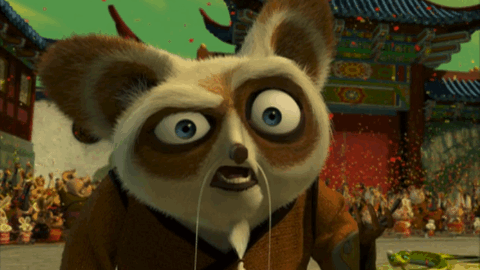
So many, many questions. Yes, I know this is an AU, but still I must know. WHY? Why is Hikaru now the captain of the gymnastics team when before she was literally raised in a Kendo dojo? Did this change come into play or make sense? NO. It’s implied that Umi is still captain of her fencing team. And Fuu...now plays piano. That’ll come in handy fighting all those monsters. Hey, wasn’t it neat that all three girls were already trained in martial arts and combat before they were summoned to Cephiro, making it actually believable that they could become warriors? WELL SCREW THAT FUU PLAYS PIANO!!!
Why is Eagle now Emeraud’s brother instead of Ferio? Was it just so Ferio could fight Fuu? And yes, why I did notice that Umi was also pitted against her respective love interest. And wasn’t she just oh so sad when he died...for some reason. It’s not like they had the same relationship from the original where she literally slapped the character development into him. In fact, they had no relationship at all outside of him trying to kill her. But here he goes boom and it’s oh noes poor Ascot! We barely knew ye! No really, we barely knew ye.
Why are the girls naked inside their Mashins? They weren’t naked in the original. They had armor. Oh right, because in the original getting their armor and evolving it was part of their growth as Magic Knights and ain’t nobody got time for that here. NEKKID IT IS!!!
What the hell is even going on plotwise? The original was deceptively simple: A take on fantasy RPGs/rescue the princess stories with a dark twist at the end of season one and season two picking up the pieces. Season one: Three girls are summoned to another world to rescue a princess. They must find weapons and armor while fighting monsters and foes. At the end of their journey they find that both the villain and the princess are not what they seemed and their true mission was a deception from the start.
In the OVAs...I don’t even know where to start. Hikaru makes a wish to stay with Umi and Fuu, who are already her friends in this version, and somehow this triggers them being chosen to save the world because instead of being summoned to Cephiro, Cephiro is crashing into Earth...
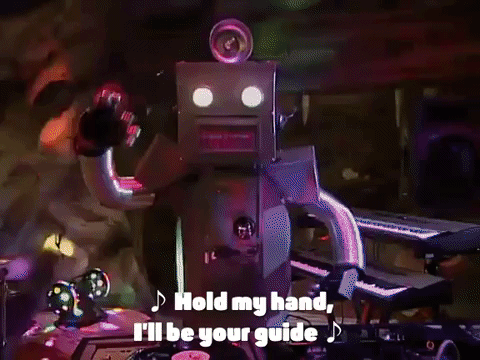
Because Emeraude wanted it to I guess? Or maybe it was her brother who isn’t Ferio but Eagle who has her under a spell thinking Zagato is alive. Oh yeah, Zagato is dead. And this whole thing is happening because the Spirits are mad at Cephiro? And Emeraude is also a spirit?
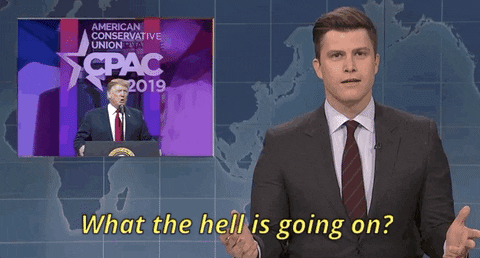
It feels like Clamp wanted to remake “Rayearth” as a gloomy apocalyptic drama in the vein of “X/1999″, and believe me, “X” was already an eighteen volume slog. We don’t need more “X”. Looking at the credits however, it appears the Clamp team didn’t have much to do with the OVA. They had writing credits on the anime. Here, nothing but the obligatory notice that these washed out imitations are based on characters they created. So I can’t blame this on them.
But the biggest sin in this mess is Hikaru. This is Hikaru in the series:
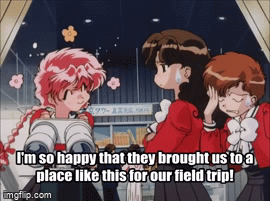
This is Hikaru in the OVA:
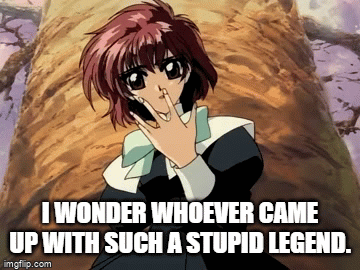
“Meh, dreams and legends are stoopid. Broody angst brood.”
And it doesn’t get any better. Hikaru, one of the most lovable Genki girls in anime/manga and one of Clamp’s best characters, has been watered down to a generic, bland dismal shell. The other two aren’t great but there are small traces of them still there. Hikaru is left with no personality whatsoever. Ya done my girl wrong, OVA.
Even if you find the original corny, or aren’t a fan of magical girl shows, it had charm. It had character development for heroes and villains alike. It had a bright color palette and a fun Sisterhood of the Traveling Escudo Armor. Here? You could replace the characters with cardboard and get the same effect.
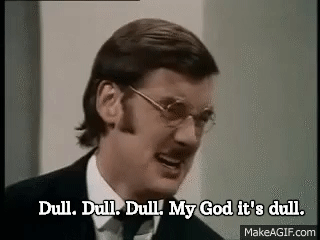
Stick to the manga. Or the first season of the anime.
#magic knight rayearth#rayearth#hikaru shidou#umi ryuuzaki#fuu hououji#clamp#anime#manga#OVA#animation
12 notes
·
View notes
Photo








Time for some Magic Knight Rayearth plugs this festive season.
#Magic Knight Rayearth#CLAMP#japanese anime#90s anime#90s icons#Anime / Manga#Hikaru Shidou#Umi Ryuuzaki#fuu hououji#wallpaper#rune god#mashin#selece#windam#OVA#tv anime
9 notes
·
View notes
Photo

yoshikoyohane mom seiyuu is voice by Hekiru Shiina and other characters she voice in tails from sonic ova and Hikaru Shidou from magic knight rayearth
#yohane mom#yoshiko mom#hekiru shiina#miles tails prower#tails#sonic ova#hikaru shidou#magic knight rayearth#rayearth#love live sunshine
13 notes
·
View notes
Text
Why I love Umi and Ascot
I have loved Magic Knight Rayearth ever since I was a kid. I come from a small country where anime and manga was a pretty unknown thing during my childhood, but then they started to air shows like Rayearth and Sailor Moon which were so different from what I had usually watched and I was so hooked. However I never managed to watch every single episode of Rayearth anime, I started from the 2nd season and didn't even see all the episodes from that either, I was very late to the party. Later on I got to buy the original manga instead and got to experience the story via that, and I LOVED it! The characters that really stood out to me were Umi and Ascot, let's start with Umi: In the beginning Umi is a very selfish and bratty girl who comes from a rich family, and she is constantly complaining about how she is missing her personal things. However during their adventure she learns to care about others and becomes more patient. She starts to really value her friendship with other girls. Many people have pointed out that Umi seems to get most development out of the all main characters and I do agree. She feels like a totally different person in the very end of the story. What was the real highlight in her character imo was when she managed to talk sense to Ascot when he attacked them. She had learned so much from their friendship and now she used this knowledge to show Ascot how he should really treat his monster friends. Then about Ascot: He starts out as a literal child who was incredibly misguided, he only wanted a good place for his monster friends but everyone were scared of them. That is until Zagato offered him and his friends a place to stay, and he started to serve Zagato as well. He used his friends as weapons against others, until he met Umi who told him off for not treating his friends right. He understood his mistakes and apologized the Magic Knights. And in the second season we see him definitely being learned a lot from Umi. He tells that he has stood up for his friends so nobody is afraid of them anymore, he has learned his own magic skills from Clef so he wouldn't need to always depend on others and he is also helping to do many chores like picking up fruits with his monsters. During the second season I totally love how much of a deep bond there has been developed between Umi and Ascot. While Ascot's feelings were definitely romantic towards her while she was overall a very oblivious person, they still do so much together. Ascot tells and shows to Umi how much he has learned and how much Umi has affected him, for which Umi happily compliments him. He also insists to help the Magic Knights when they are about to go find the path to the pillar, and later apologizes to Umi how he isn't strong enough, causing Umi to smile at him with a moving expression. After Hikaru removes Cephiro's pillar system and the girls return to the others, they are floating towards the ones who the have the strongest bonds with, of course Umi decending towards Ascot. Then in the epilogue we see them making tea together, while Ascot asks if Umi is dating anyone or if she overall likes someone, abd she is still as oblivious as ever. :) If I would add some smaller details why I love these two, here's some: First of all, Umi is often described to be very beautiful, almost like a model, but personality wise she was very brattish. When she changed Ascot however, she did it while reasoning with her, so I really like how Ascot clearly is not into her because of her looks, it was what she taught to her that made him to love her. I also love Ascot's overall devotion towards her, in both manga and anime we see him going to such lenghts to protect Umi, how he even apologizes to her because he really wants to do more but isn't strong enough. Not to mention Mokona also clearly noticed their bond and thought they should go together in the same ship to find the path to the pillar.
Here I would shortly talk about the MKR anime adaptation. Tbh, I was rather disappoited what they did to their relationship here. I do love that Ascot is still devoted towards her, but their overall bond that I thought was very solid in the manga felt like an afterthought. I wasn't very happy about Umi having feelings for Clef either, mainly because it I never felt that much connection between them, maybe somewhat in the OVA but not in the original series, not to mention I always thought Umi was supposed to be oblivious to love in general. I get that anime doesn't have to be exactly the same as the manga, but again I felt that the bond between Umi and Ascot was very solid and in the anime I was very sad we couldn't see Umi truly reacting to Ascot's growth.
While I doubt MKR would ever get a Brotherhood treatment, I would still like to see one someday, and I would especially love the bond between Umi and Ascot being shown in its whole glory. They don't need to actually become a couple or anything, as it was left very vague in the manga too, but I definitely want them to show their bond done right. I overall loved how only one of the Magic Knights got a love interest (that being Fuu), meaning not all the characters have to be in a romantic relationship, which I find admirable. Hikaru and Umi are just still very young and oblivious people. I am not saying all this just because I ship Asmi, I say this because I felt that the bond they had in the manga was such a strong part of their characters. I only want to see that done in proper way. Thank you for reading!
10 notes
·
View notes
Text



Rayearth Episode 3
9 notes
·
View notes
Photo

Hekiru Shiina anime roles
Kaguya Mitsuka(cure selene’s mother)
yoshikoyohane’ mom from love live sunshine
Hikaru Shidou from magic knight rayearth
tails from sonic ova
#heikiru shiina#hekiru shiina#yoshiko mom#yohane mom#love live sunshine project#love live sunshine#love live sunshine seiyuu#love live seiyuu#lovelive#LoveLive!#mitsuka kaguya#kaguya misuka#star twinkle precure#star twinkle pretty cure#precure seiyuu#pretty cure seiyuu#Hikaru Shidou#Magic Knight Rayearth#Rayearth#tails#Miles Tails Prower#sonic ova
12 notes
·
View notes